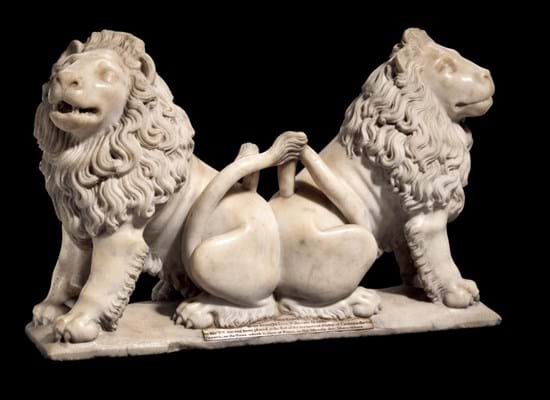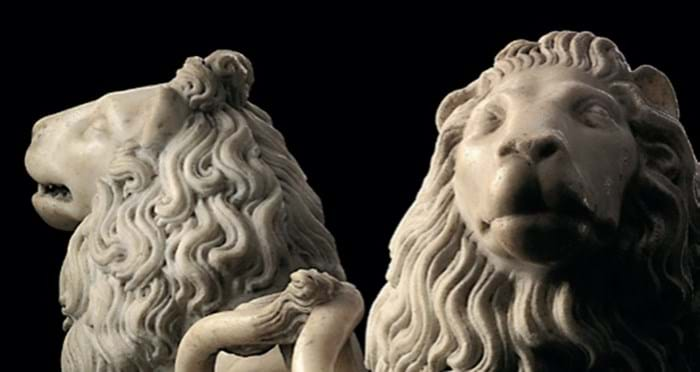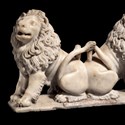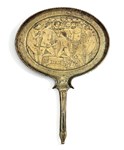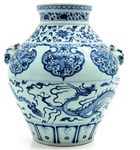The auction house had hoped the season’s greatest rediscovery could make at least as much as a pair of marble mourners from the tomb of the Duc de Berry (brother of Charles V) at Christie’s Paris last year. They had sold to the Louvre at €4.4m (£3.67m).
Christie’s was not disappointed. The lions bettered their ‘on request’ estimate of around £4m to sell over the phone at £8.2m (plus 25/20/12% buyer’s premium), a record for medieval art at auction.
The 18in (46cm) addorsed figures of seated beasts would have been placed at the feet of the king’s effigy, one of a group of four family tombs commissioned by the 26-year-old Charles V for the royal necropolis of the Basilica of Saint Denis in Paris.
The sculptor André Beauneveu (c.1335- 1402) and his workshop took two years from 1364-66 to complete monuments to Charles, his father and his paternal grandparents.
Like many of the royal tombs, Charles V’s resting place was dismantled in 1793 during the Revolution. Elements were salvaged by archaeologist Alexandre Lenoir (1769-1839) for a museum of French monuments, and the effigy has since been restored to Saint Denis.
The lions, hitherto known only to scholars from an 18th century drawing and an engraving, had been in the same English family for over 200 years, since they were acquired in France – probably from Lenoir himself – by the English aristocrat Sir Thomas Neave (1761-1848).
An engraved silver plaque on the base reads These lyons were brought from St Dennis in 1802 by Sir T. N. having been placed at the feet of the recumbent statue of Charles V of France on the tomb which is now in Paris in the Musée Des Monumens.

An engraved silver plaque reads ‘These lyons were brought from St Dennis in 1802’.
“They are really fantastic”, says Christie’s sculpture specialist Donald Johnston. “I’ve known of them for over 20 years and I was always hoping that one day the owner would decide to sell.”
Johnston visited Saint Denis several times to confirm that the marble and the polishing of the stone was identical. One detail was crucial: “To the reverse of the lions are the remains of two little dowels that fit into the effigy. I measured both and they are exactly the same distance apart.”
The Louvre has previously used its power of pre-emption to secure fragments from the royal tombs that have sold in France.
However, with no similar law existing in the UK, Charles V’s lions are thought to have been sold to an American buyer.


